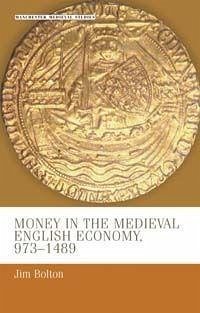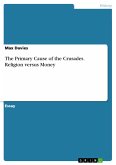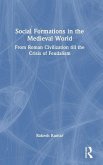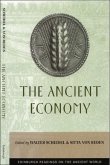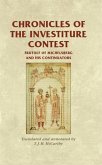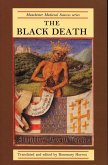The importance of money as one of the key variables in the workings of the medieval economy is often overlooked. This new study first provides the reader with a background to the problems of modelling the medieval economy and the value of the Fisher equation of exchange to monetary historians, to the pratical processes of strking coins from silver and gold acquired through foreign trade and to the importance of royal control over mints and exchanges. These theories are then used to analyse how money worked within the economy of the early, central and late middle ages with fluctuations in the size of the circulating medium and the availability of credit acting as either a brake on or a stimulus to economic expansion. A full money economy did not emerge until c. 1300 but its existence and flexibility helped the economy survive the severe shocks of the late middle ages.
Current explanations of long-run changes in the medieval English economy have largely used models in which changes in the money supply play very little part. Here a fresh approach is taken and the money supply is seen as one of the main variables in the workings of the economy. In Part One, theories and problems in using monetary theory and numismatic evidence to model the medieval economy are fully discussed, as are the coins in circulation and the practical challenges faced in putting into circulation millions of coins struck by hand. The aim is to provide the reader with an informed background to the discussions in the chronological sections that follow in Part Two. Here, three broad periods are considered: 973-1158; 1158-1351; and 1351-1489. Each occupies a particular space in the history of money and the money economy. In the first there was a limited money supply, a shortage of coin and a 'monetised' economy. The second saw a more than tenfold increase in the money supply, accompanied by growing literacy and numeracy; new accounting methods; and laws that gave greater protection to creditors, leading to growth in the credit market. Together these factors produced the full money economy necessary to support the expansion of the thirteenth century. The final section challenges the idea that monetary deflation, combined with population decline, caused a general crisis in the post-plague society. The money economy was challenged but it survived by finding new ways of extending the money supply using flexible and transferable credit instruments which were eventually used as forms of 'paper money'. Medieval material is used throughout to illustrate the argument.
Current explanations of long-run changes in the medieval English economy have largely used models in which changes in the money supply play very little part. Here a fresh approach is taken and the money supply is seen as one of the main variables in the workings of the economy. In Part One, theories and problems in using monetary theory and numismatic evidence to model the medieval economy are fully discussed, as are the coins in circulation and the practical challenges faced in putting into circulation millions of coins struck by hand. The aim is to provide the reader with an informed background to the discussions in the chronological sections that follow in Part Two. Here, three broad periods are considered: 973-1158; 1158-1351; and 1351-1489. Each occupies a particular space in the history of money and the money economy. In the first there was a limited money supply, a shortage of coin and a 'monetised' economy. The second saw a more than tenfold increase in the money supply, accompanied by growing literacy and numeracy; new accounting methods; and laws that gave greater protection to creditors, leading to growth in the credit market. Together these factors produced the full money economy necessary to support the expansion of the thirteenth century. The final section challenges the idea that monetary deflation, combined with population decline, caused a general crisis in the post-plague society. The money economy was challenged but it survived by finding new ways of extending the money supply using flexible and transferable credit instruments which were eventually used as forms of 'paper money'. Medieval material is used throughout to illustrate the argument.

